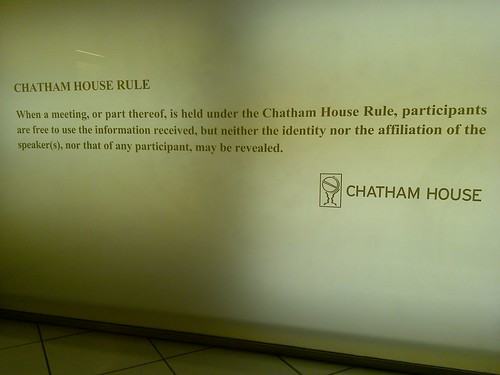With RSA wrapping up, I figured I would do something fun with Alice, Bob, and crypto. There is a need for small digital signatures (Micro Digital Signatures/”MicroDigiSigs” if I can be as bold as to think I can start a nerdy meme) and tools to support them over small message spaces such as The Twitters, SMS/Text Messaging, barcodes, jabber/xmpp, and probably tons of other things I haven’t even thought of.
Elliptic Curve Cryptography (ECC) provides a solution because of some inherent traits in the algorithms:
- Speed to compute
- Low processor load
- Small keys
- Small signatures
Some general-type info to know before we go further with this:
- OpenSSL 1.00 supports ECC functions. This is teh awesome, thank you OpenSSL peoples.
- You can check out the OpenSSL HOWTO, I derived a ton of info from this resource http://www.madboa.com/geek/openssl/
- Issues with ECC support in OpenSSL:
- ECC is poorly documented in OpenSSL. Pls fix kthanx.
- Some targets are missing from OpenSSL (ECC Digital Signature Algorithm signatures with SHA-256).
Now on to the step-by-step process. Feel free to shoot holes in this, I’m sure there are tons of other ways to do things.
Show all the available curves:
rybolov@ryzhe:~$ openssl ecparam -list_curves
secp112r1 : SECG/WTLS curve over a 112 bit prime field
secp112r2 : SECG curve over a 112 bit prime field
secp128r1 : SECG curve over a 128 bit prime field
secp128r2 : SECG curve over a 128 bit prime field
secp160k1 : SECG curve over a 160 bit prime field
secp160r1 : SECG curve over a 160 bit prime field
secp160r2 : SECG/WTLS curve over a 160 bit prime field
secp192k1 : SECG curve over a 192 bit prime field
secp224k1 : SECG curve over a 224 bit prime field
secp224r1 : NIST/SECG curve over a 224 bit prime field
secp256k1 : SECG curve over a 256 bit prime field
secp384r1 : NIST/SECG curve over a 384 bit prime field
secp521r1 : NIST/SECG curve over a 521 bit prime field
prime192v1: NIST/X9.62/SECG curve over a 192 bit prime field
prime192v2: X9.62 curve over a 192 bit prime field
prime192v3: X9.62 curve over a 192 bit prime field
prime239v1: X9.62 curve over a 239 bit prime field
prime239v2: X9.62 curve over a 239 bit prime field
prime239v3: X9.62 curve over a 239 bit prime field
prime256v1: X9.62/SECG curve over a 256 bit prime field
sect113r1 : SECG curve over a 113 bit binary field
sect113r2 : SECG curve over a 113 bit binary field
sect131r1 : SECG/WTLS curve over a 131 bit binary field
sect131r2 : SECG curve over a 131 bit binary field
sect163k1 : NIST/SECG/WTLS curve over a 163 bit binary field
sect163r1 : SECG curve over a 163 bit binary field
sect163r2 : NIST/SECG curve over a 163 bit binary field
sect193r1 : SECG curve over a 193 bit binary field
sect193r2 : SECG curve over a 193 bit binary field
sect233k1 : NIST/SECG/WTLS curve over a 233 bit binary field
sect233r1 : NIST/SECG/WTLS curve over a 233 bit binary field
sect239k1 : SECG curve over a 239 bit binary field
sect283k1 : NIST/SECG curve over a 283 bit binary field
sect283r1 : NIST/SECG curve over a 283 bit binary field
sect409k1 : NIST/SECG curve over a 409 bit binary field
sect409r1 : NIST/SECG curve over a 409 bit binary field
sect571k1 : NIST/SECG curve over a 571 bit binary field
sect571r1 : NIST/SECG curve over a 571 bit binary field
c2pnb163v1: X9.62 curve over a 163 bit binary field
c2pnb163v2: X9.62 curve over a 163 bit binary field
c2pnb163v3: X9.62 curve over a 163 bit binary field
c2pnb176v1: X9.62 curve over a 176 bit binary field
c2tnb191v1: X9.62 curve over a 191 bit binary field
c2tnb191v2: X9.62 curve over a 191 bit binary field
c2tnb191v3: X9.62 curve over a 191 bit binary field
c2pnb208w1: X9.62 curve over a 208 bit binary field
c2tnb239v1: X9.62 curve over a 239 bit binary field
c2tnb239v2: X9.62 curve over a 239 bit binary field
c2tnb239v3: X9.62 curve over a 239 bit binary field
c2pnb272w1: X9.62 curve over a 272 bit binary field
c2pnb304w1: X9.62 curve over a 304 bit binary field
c2tnb359v1: X9.62 curve over a 359 bit binary field
c2pnb368w1: X9.62 curve over a 368 bit binary field
c2tnb431r1: X9.62 curve over a 431 bit binary field
wap-wsg-idm-ecid-wtls1: WTLS curve over a 113 bit binary field
wap-wsg-idm-ecid-wtls3: NIST/SECG/WTLS curve over a 163 bit binary field
wap-wsg-idm-ecid-wtls4: SECG curve over a 113 bit binary field
wap-wsg-idm-ecid-wtls5: X9.62 curve over a 163 bit binary field
wap-wsg-idm-ecid-wtls6: SECG/WTLS curve over a 112 bit prime field
wap-wsg-idm-ecid-wtls7: SECG/WTLS curve over a 160 bit prime field
wap-wsg-idm-ecid-wtls8: WTLS curve over a 112 bit prime field
wap-wsg-idm-ecid-wtls9: WTLS curve over a 160 bit prime field
wap-wsg-idm-ecid-wtls10: NIST/SECG/WTLS curve over a 233 bit binary field
wap-wsg-idm-ecid-wtls11: NIST/SECG/WTLS curve over a 233 bit binary field
wap-wsg-idm-ecid-wtls12: WTLS curvs over a 224 bit prime field
Oakley-EC2N-3:
IPSec/IKE/Oakley curve #3 over a 155 bit binary field.
Not suitable for ECDSA.
Questionable extension field!
Oakley-EC2N-4:
IPSec/IKE/Oakley curve #4 over a 185 bit binary field.
Not suitable for ECDSA.
Questionable extension field!
ECC keys are specific to curves. Make a key for secp256k1, it’s fairly standard (ie, specified in NIST’s DSA Signature Standard (DSS) as are all of the secp* curves).
rybolov@ryzhe:~$ openssl ecparam -out key.test.pem -name prime256v1 -genkey
rybolov@ryzhe:~$ cat key.test.pem
—–BEGIN EC PARAMETERS—–
BggqhkjOPQMBBw==
—–END EC PARAMETERS—–
—–BEGIN EC PRIVATE KEY—–
MHcCAQEEIGkhtOzaKTpxETF9VNQc7Nu7SMX5/klNvObBbJo/riKsoAoGCCqGSM49
AwEHoUQDQgAEXmD6Hz/c8rxVYe1klFTUVOxxKwT4nLRcOLREQnC5GL+qNayqx7d0
Q+yal6sVSk013EbJr9Ukw/aiQzbrlcU1VA==
—–END EC PRIVATE KEY—–
Make a public key. This is poorly documented and I had to extrapolate from the RSA key generation process.
rybolov@ryzhe:~$ openssl ec -in key.test.pem -pubout -out key.test.pub
read EC key
writing EC key
rybolov@ryzhe:~$ cat key.test.pub
—–BEGIN PUBLIC KEY—–
MFkwEwYHKoZIzj0CAQYIKoZIzj0DAQcDQgAEXmD6Hz/c8rxVYe1klFTUVOxxKwT4
nLRcOLREQnC5GL+qNayqx7d0Q+yal6sVSk013EbJr9Ukw/aiQzbrlcU1VA==
—–END PUBLIC KEY—–
Make a test message:
rybolov@ryzhe:~$ echo “destroy all monsters” > msg.test
rybolov@ryzhe:~$ cat msg.test
destroy all monsters
Generate MD5, SHA-1, and SHA-256 hashes:
rybolov@ryzhe:~$ openssl dgst -md5 msg.test
MD5(msg.test)= a4a5e7ccfda28fdeb43697b6e619ed45
rybolov@ryzhe:~a$ openssl dgst -sha1 msg.test
SHA1(msg.test)= 4d1d1b917377448a66b94e1060e3a4c467bae01c
rybolov@ryzhe:~$ openssl dgst -sha256 msg.test
SHA256(msg.test)= efd54922696e25c7fed4023b116882d38cd1f0e4dcc35e38548eae9947aedd23
Make a signature, note that every time you make a signature with ECC it will be different.
rybolov@ryzhe:~$ cat msg.test | openssl dgst -sha1 -sign key.test.pem -out test.sha1.sig
rybolov@ryzhe:~$ cat msg.test | openssl dgst -sha1 -sign key.test.pem
0E�!ÔøΩÔøΩÔøΩE�ÔøΩ-y
�ÔøΩÔøΩ1K2ÔøΩÔøΩ�›§�{!ÔøΩv4+�ÔøΩÔøΩÔøΩÔøΩ� WÔøΩ ��ÔøΩ�cÔøΩÔøΩP≈ô—áÔøΩaÔøΩ*~)@aÔøΩ1ÔøΩJ>ÔøΩdÔøΩ
Make the signature readable/text by encoding it with Base64:
rybolov@ryzhe:~$ openssl enc -base64 -in test.sha1.sig
MEUCIGbR7ftdgICMZCGefKfd6waMvOM23DJo3S0adTvNH5tYAiEAuJ6Qumt83ZsL
sxDqJ1JNH7XzUl28M/eYf52ocMZgyrk=
rybolov@ryzhe:~$ wc -m test.sha1.sig.asc
98
rybolov@ryzhe:~$ openssl enc -base64 -in test.sha1.sig > test.sha1.sig.asc
Validate the signature:
rybolov@ryzhe:~$ openssl dgst -sha1 -verify key.test.pub -signature test.sha1.sig msg.test
Verified OK
OpenSSL is dumb here because it can’t read base64:
rybolov@ryzhe:~$ openssl dgst -sha1 -verify key.test.pub -signature test.sha1.sig.asc msg.test
Error Verifying Data
3077905144:error:0D0680A8:asn1 encoding routines:ASN1_CHECK_TLEN:wrong tag:tasn_dec.c:1320:
3077905144:error:0D07803A:asn1 encoding routines:ASN1_ITEM_EX_D2I:nested asn1 error:tasn_dec.c:382:Type=ECDSA_SIG
So we can use OpenSSL encode with the -d flag to make a binary version:
rybolov@ryzhe:~$ openssl enc -base64 -d -in test.sha1.sig.asc -out test.sha1.sig.bin
rybolov@ryzhe:~$ cat test.sha1.sig.
test.sha1.sig.asc test.sha1.sig.bin
rybolov@ryzhe:~$ cat test.sha1.sig.bin
0E� fÔøΩÔøΩÔøΩ]ÔøΩÔøΩÔøΩd!ÔøΩ|ÔøΩÔøΩÔøΩ�ÔøΩÔøΩÔøΩ6ÔøΩ2hÔøΩ-�u;ÔøΩ�ÔøΩX�!ÔøΩÔøΩÔøΩÔøΩk|›õ
ÔøΩ�ÔøΩ’RM�ÔøΩÔøΩR]ÔøΩ3ÔøΩÔøΩÔøΩÔøΩpÔøΩ` π
rybolov@ryzhe:~$ openssl dgst -sha1 -verify key.test.pub -signature test.sha1.sig.bin msg.test
Verified OK
We can also do a prverify which is to verify the signature using the private key:
rybolov@ryzhe:~$ openssl dgst -sha1 -prverify key.test.pem -signature test.sha1.sig.bin msg.test
Verified OK
Now to use this whole thing, you’ll need concatenate the signature with the massage and add a delimiter or send 2 messages, one with the message, the other with the signature. Any kind of special character like |!^% etc works great as a delimeter, so something like this works:
MEUCIGbR7ftdgICMZCGefKfd6waMvOM23DJo3S0adTvNH5tYAiEAuJ6Qumt83ZsLsxDqJ1JNH7XzUl28M/eYf52ocMZgyrk=destroy all monsters
destroy all monsters|MEUCIGbR7ftdgICMZCGefKfd6waMvOM23DJo3S0adTvNH5tYAiEAuJ6Qumt83ZsLsxDqJ1JNH7XzUl28M/eYf52ocMZgyrk=
Topics for further research:
I haven’t talked at all about key distribution. This gets real hard real fast just for the simple fact that you have to get an initial key to both ends of the conversation. You can do key rotation inband, but that first hookup is a logistical effort. Glad to hear ideas on this.
To get a smaller signature, use MD5 and secp112r1. Normally you wouldn’t create digital signatures using MD5 (US Government standard is moving to SHA-256), but it’s a tradeoff in paranoia/crackability with signature size. You have to do each of the steps manually because the objects for ECDSA only use SHA-1:
- Hash the command
- Encrypt the hash using the private key
- Convert the encrypted hash to base64
You can use the OpenSSL shell prompt to save some keystrokes: openssl<enter> You can also call OpenSSL as a C library, which should work nicely for embedded code.
I’m interested in building a comparison table of the following items, I just haven’t had time to build a script to compare all the data for me:
- ECC Curve
- Time to Compute a Signature
- Size of Signature
- Relative key and signature strength
Similar Posts:

 No Comments »
No Comments » Posts RSS
Posts RSS


